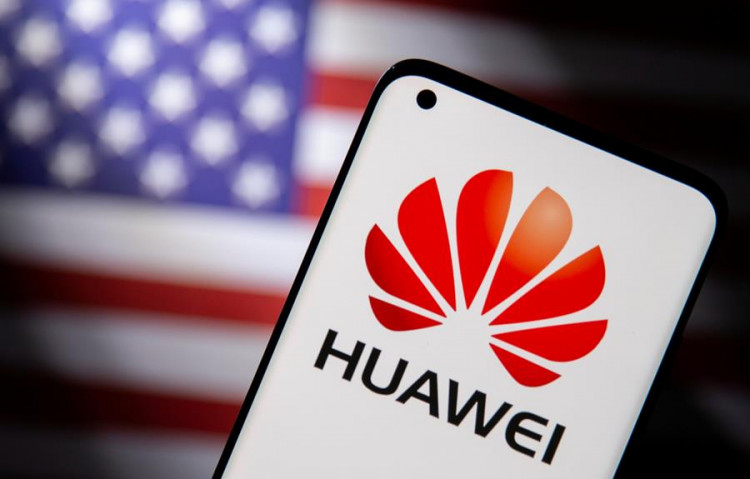On Wednesday, August 30, Huawei Investment Holdings Limited released its semi-annual report for 2023. The report revealed that Huawei's operating revenue for the first half of this year reached approximately ¥3,082.90 billion, marking a 3.24% increase compared to the same period last year. This uptick effectively reverses the 5.87% decline seen in the first half of the prior year.
Over two weeks ago, Huawei disclosed that its profit margin for the first half stood at 15.0%, three times the profit margin of 5.5% from the first half of the previous year. The exact profit amount was not revealed at that time.
However, this Wednesday's report highlighted an even more impressive profit surge. The profit for the first half reached about ¥521.58 billion, a year-over-year growth of 209%. This is compared to the ¥168.77 billion from the same period last year. Net profit hit around ¥465.23 billion, an astonishing growth of 218%, exceeding last year's ¥146.29 billion for the same period.
Comparatively, Huawei's revenue growth this year is poised to substantially surpass last year's, where annual revenues just exceeded ¥6,423 billion, a mere 0.9% increase from 2021. Moreover, the net profit for the first half of this year has already surpassed the entire previous year's ¥355.62 billion, a 30.8% increase.
The spike in net profit is mainly attributed to changes in fair value. The earnings from these fair value changes alone amounted to ¥363.67 billion, 19 times the ¥19.15 billion from the same period last year.
Commentators have noted that Huawei's profit boost is a result of its digital transformation combined with a continuous optimization and resilience in its product portfolio.
In May, Huawei's CTO for the Cloud China region and the head of the Cloud Ecosystem Solutions Department, Xiao Yi, explained that through digital transformation, Huawei nearly doubled its revenue without significantly increasing its staff. Additionally, the integration of design and manufacturing reduced prototype cycles by 20% and manufacturability issues decreased by 30%.
Huawei's former rotating chairman, Xu Zhijun, mentioned in a past annual report that Huawei has been continuously optimizing its industry combination. Now, it encompasses a mix of ICT infrastructure, terminals, Huawei Cloud, digital energy, and smart car solutions to cater to customers. This is further bolstered by the 2012 Lab and HiSilicon as technical support platforms.
Zhijun elaborated that these industries range from traditional strengths to pioneering fields, from growth industries to mature ones, and from hardware-dominated to software-dominated sectors. He stressed, "Huawei has built a robust industry combination, laying a solid foundation for the company's sustainable survival and growth."
Research and Development Expenditures
Huawei has consistently committed to investing over 10% of its sales revenue in research and development, totaling over ¥9,773 billion in the past decade.
The recent semi-annual report underscores Huawei's ongoing R&D momentum. In the first half of this year, R&D expenses reached ¥826.04 billion, a 4.48% increase from the ¥790.63 billion in the same period last year.
The R&D expenses for the first half represented 26.8% of total revenue, which is a larger percentage than the prior year. If this trend continues, this year's annual R&D spending could surpass last year's.
Revival in the Mobile Business
Two weeks prior, Huawei announced that its core business, ICT infrastructure, generated sales of ¥1,672 billion in the first half, approximately 54% of the total revenue.
In the first half, Huawei's terminal business, including smartphones, brought in ¥1,035 billion, a 2.2% year-over-year growth. While this is lower than the company's overall revenue growth, it is a significant improvement from last year's 25.4% decline.
Other smaller sectors reported sales of ¥241 billion for cloud computing, ¥242 billion for digital energy, and ¥10 billion for smart car solutions.
Huawei noted that the company's overall operations were stable, and the results were in line with expectations. Meng Wanzhou, Huawei's rotating chairman, remarked that the company capitalized on trends in digitization, intelligence, and decarbonization, and intensified their technical inputs.
Given the recent enthusiastic reception for the Mate 60 Pro, Huawei's terminal revenues have significant growth potential.
Just a day before the half-year report's release, Huawei launched an early sale for the Mate 60 series, making the Mate 60 Pro the first ever pre-release model. The phone quickly became a trending topic online.
On launch day, the 12GB+512GB version of the Mate 60 Pro, priced at ¥5999 and ¥6999, sold out in less than an hour.
While Huawei hasn't officially confirmed its return to 5G, tests indicate that the Mate 60 Pro can achieve peak internet speeds exceeding 800Mbps, aligning with 5G standards.
Earlier reports highlighted a standout feature of Huawei's new phone: satellite communication, allowing users to make calls directly through satellites. This makes the Mate 60 Pro the world's first consumer smartphone with satellite calling capabilities.
The official site states that even without ground networks, users can make and receive satellite calls, send satellite messages, and track their locations.
Furthermore, the Mate 60 Pro benefits from Huawei's latest AI technology. Earlier this month, Huawei announced that its smartphone assistant, Xiaoyi, now has large-scale AI capabilities. With the PanGu natural language, vision, and multi-modal large models, Xiaoyi's capabilities in smart interactions, productivity enhancement, and personalized services have been continuously enhanced.






